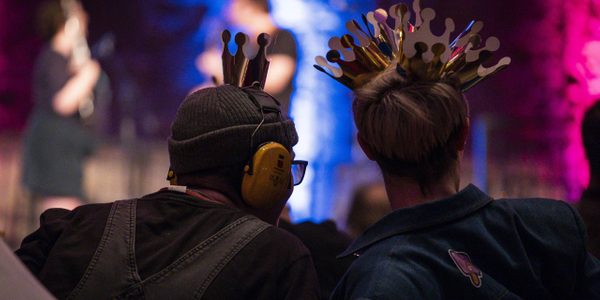
Relaxed Venue
In February 2020 we launched as a Relaxed Venue. In a move to open up to more audiences, we aimed to imbed access and inclusivity across all our activities.
The Relaxed Venue method works to identify and dismantle the barriers faced by disabled people, based on the Social Model of disability.
As part of Arts Council England’s Change Makers programme, we worked with Touretteshero – co-founded by artist Jess Thom in 2010 as a creative response to her experience of having Tourettes Syndrome – to make the entire experience of visiting our venue more welcoming, accessible and inclusive.
Developing a Relaxed Venue Model
The Relaxed Venue method takes the principles that guide Relaxed Performances and applies them across all of an organisation’s spaces and programmes.
Relaxed Performances were originally devised to make performance more accessible to people disabled by the usual rules of theatre etiquette.
The principles encompass everything from clear, understandable advance information, to taking a relaxed approach to movement and noise coming from the audience.
The Relaxed Venue method focuses on six areas:
- Physical – building and spaces
- Creative – shows and artistic programme
- Structural – governance and staffing
- Digital – website and social media
- Emotional – relationships with audience, staff and volunteers
- Community – connections and social action work
The Guiding Commitments
Three guiding commitments emerged for what Relaxed Venues will work to embed. These simple commitments can be applied to many areas of life and have the potential to radically improve disabled people’s experience of public spaces.
- To create no new barriers: A Relaxed Venue understands disability using the social model and acknowledges that people with impairments are disabled by environments, systems and attitudes that do not consider difference in how they are set up. A Relaxed Venue commits to considering access at every stage of any project, and to creating no new disabling barriers within their work.
- To ensure equality of experience: A Relaxed Venue goes beyond being technically accessible to disabled people and understands that there needs to be parity in the services it provides. This does not mean that everyone has to experience exactly the same thing, but it does mean that thought is put into how experiences feel for all audiences, staff and artists.
- To reduce fuss: A Relaxed Venue acknowledges the accumulative impact that experiencing barriers has on individual and community wellbeing, and therefore commits to reducing fuss around access requirements by ensuring that they are understood, embedded and as seamless as possible.